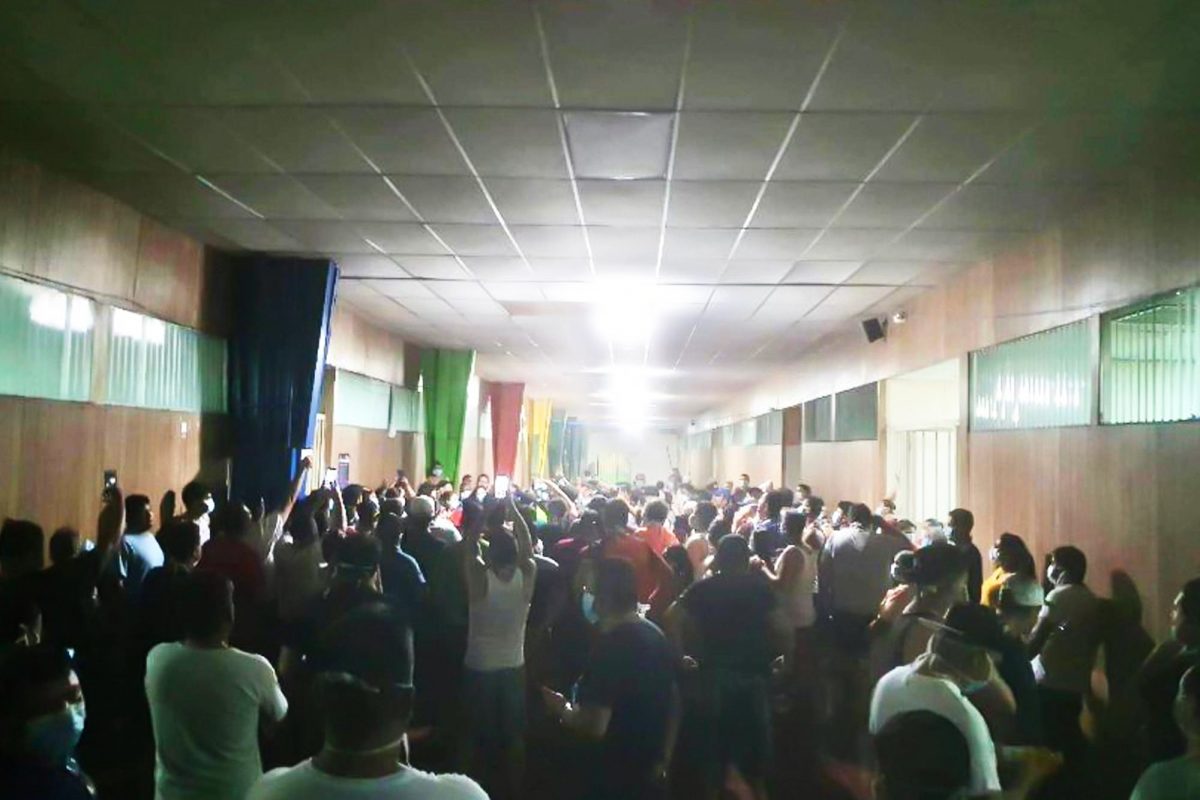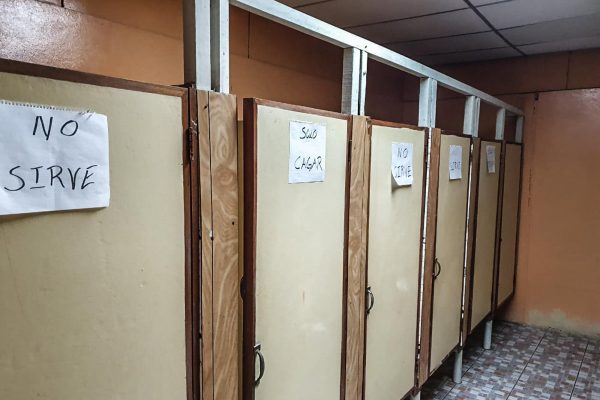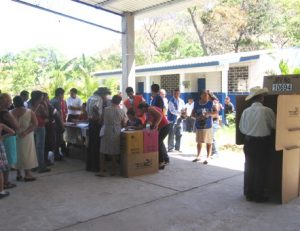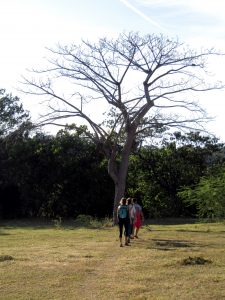Politics
How Carlos Henriquez got COVID19 on a containment center in El Salvador
El Faro is publishing the story of Carlos Henríquez, who caught COVID19 after being sent to “The Olympic Village” (Villa Olimpica), a containment center run by the government. The Ministry of Health tweeted wrong facts about his death a few days ago.
The original article written by Carlos Dada in Spanish can (and should) be read here.
Carlos Henríquez Cortez, a 67-year-old engineer, returned to El Salvador on March 13 after a brief two-day trip to Guatemala. Five weeks later, he became the eighth deceased by COVID-19 in El Salvador. What happened between those two moments is a compendium of negligence, chaos and disinformation by the authorities that ended the engineer’s life. Her son recounts those five weeks.
The night of April 22, the Minister of Health, Francisco Alabí, announced on his Twitter account the death of a patient with COVID-19. “It is the 8th. A 62-year-old patient from the United States died in our country and received all the medical attention and effort of the front-line staff. We stand with his mourning family. ”
Following that tweet, President Nayib Bukele also tweeted: “Since he came to the UCI we have been watching his evolution. It went very badly, but then it improved for a few days and we were all excited. ”
Four hours later, someone named Carlos Henríquez replied to Alabí: “If you stand with his mourning family, why don’t you contact them to obtain truthful information. My dad did not come from the United States, he is not 62 years old, he did not receive all the necessary medical attention and he became infected in the sports village where he should not have been due to his age”. He also replied to Bukele: “NO ONE was watching. Now my dad is gone”.
Alabi reacted by apologizing the next day. He said the information was due to a system error. Bukele did not speak of the case again. Today we know that the victim’s name was Carlos Henríquez Cortez, who was 67 years old, was an engineer and commercial manager of a steel factory and who landed at the Monseñor Romero airport on March 13th, coming from Guatemala, where he had been two days for work.
The story told here by his son confirms that neither Bukele nor the minister nor anyone in the national health system was watching the engineer Henríquez Cortez. That he became infected at the Olympic Village containment center, where he was taken from the airport the same day that Alabí, then vice minister, assured on television that those over 60 would do home quarantine.
Five weeks after his return to the country, Carlos Henríquez Cortez was buried without ceremony.
His son, Carlos Henríquez, agreed to narrate his father’s path in first person since he returned to El Salvador. His sister, Karen Henríquez, also provided information for this story.
*
My dad flew from San Salvador to Guatemala on March 11, the same day that Bukele quarantined. He canceled his meetings the next day to find out at the embassy whether his age, 67, and his hypertension excluded him from going to a containment center upon return. The embassy informed him of the official protocols, according to which every person over 60 years old or with a medical precondition would go to home quarantine. With that information, he flew back to San Salvador on March 13th.
At the airport, he encountered chaos. Detained people whom they mixed together. There was no one in charge of giving information, only police guarding that no one left.
Despite what they had told him, they did not let him go to home quarantine. They moved him to a containment center in the Olympic Village. There they mixed him with many people coming from different places. There were people from Panama, but who actually came from Europe via Panama. They brought them all together at a time when there was not a single positive case in Guatemala or El Salvador.
The Foreign Ministry gave special treatment to other people who were sent to home quarantine, such as Cardinal Rosa Chávez, who came from Italy. But my dad was not given that opportunity.
When he arrived at the Olympic Village, he told us that they were all mixed up, crowded together, and that in those conditions, the most likely thing was that if someone came ill they would all be infected.
A few days earlier, the government had taken a video of a containment center that looked like a hotel. Very pretty. But that had nothing to do with the Olympic Village.
Conditions were terrible: Showers that were useless, clogged toilets, there was not even toilet paper; they were all crowded together, without social distance or protection. It was a type of torture. That lowered the morale of my dad and of all those people who were there.
He sent us videos and photos of the conditions in which they were kept and he also sent them to the Minister of Tourism, because she was in charge of finding hotels to transfer the people who were quarantined. But they did not want to get him out of there despite his age and hypertension.
On Wednesday the 18th, five days after his return from Guatemala, my dad had a strong cough and temperature. He went to consultation right there, in the Olympic Village. He had to stand in a long line for a doctor to see him, because many people were ill. When they saw him they told him he had pharyngitis and gave him medicine to lower his fever. The next day, in addition to the cough and fever, he had diarrhea. Not for all those symptoms did they test him or isolate him. He stayed there with everyone else. By then, I think all those people were already infected, like my dad.
On March 22 he was already much sicker. Despite that, they did not send him to a hospital. That day the Ministry of Health transferred him to the La Armonía hostel in San Salvador. Their statement made no sense: they said they could not take him to a hospital because he came from Guatemala and there were no infections in Guatemala. But my dad already had all the symptoms and was getting worse.
On Monday the 23rd, he couldn’t even open his eyes from how weak he felt. They called a doctor who examined him and said he had colitis and that he had come dehydrated from the Olympic Village. Through contacts, we managed to get someone to call the Ministry of Health authorities directly, who sent a pulmonologist to see him at the hostel. That was on Tuesday the 24th. The pulmonologist immediately referred him to the Saldaña hospital. By then, my dad had been in a delicate state for a week.
*
We were never informed. His transfer was reported to us informally by a doctor from the hostel. I called the Saldaña Hospital. I identified myself as the son of Carlos Henríquez Cortez and they told me that there was no patient registered with that name there. I called again later and the hospital doorman answered. He went to find out wing by wing and he was the one who confirmed to me later that my dad was there.
When he got to the Saldaña Hospital, they put him in a section with people who had tested positive. He still hoped he hadn’t been infected, because they hadn’t even tested him yet. That same day my dad sent us a message, which said: “Get me out of here”. He sent a photo of the hospital, of the sick. He wrote down “They freighten you here”, because he was next to very sick people.
Soon he was running out of oxygen. “I am afraid,” he wrote to us. Another day he said “Help”. Due to the lack of oxygen, he no longer spoke coherently or answered calls. They gave him oxygen and mists. We thought that the doctors were not prepared to deal with the virus because they reduced his oxygen and he almost died.
There, someone from the medical team asked him when he had arrived ill from the United States. He managed to tell them that he did not come from the United States but from Guatemala, that he only spent two days there and that he returned healthy. Then they called my mom to ask her the same thing. They kept registering him as someone who came from the United States.
On Friday, March 27 they finally tested him. Two days later they gave him the result: positive. By then, he couldn’t even text. On April 1, he spoke to my mom and told her that he felt a little better. He had eaten. He said he hoped to recover. That same day, a nurse told my mother that critical patients were going to be moved to the Amatepec hospital because there were Intensive Care Units there, but that my father was not in a critical situation.
On April 3, they moved him to the Amatepec. That day they took away his cell phone. It was a very difficult time for the whole family because we had no contacts in that hospital to tell us how my dad was doing. They were no longer identified by name, but by age.
After moving around, we found a contact in the Amatepec and managed to speak to the doctor. He only told us he was stable. Nothing else.
Later we learned that on April 7 he was intubated in the ICU and the next day his lung collapsed. A pneumothorax. The doctor told us to get ready because he was not well. On April 9 they pierced his lung.
According to what some nurses told us, in Amatepec there were seven people in ICU due to coronavirus. Only my dad survived in that hospital. But he got out of there in very critical condition, even with a tube in his lung. On April 10, in those already delicate conditions, he was transferred to San Rafael Hospital. We do not know why.
We were getting contacts in the hospitals that helped us, at risk of their own work. Nurses and doctors we spoke with asked us for absolute discretion because they signed a confidentiality agreement with the government. They cannot give information even to the relatives of the sick.
Today we suspect that there was medical malpractice in Amatepec, when they punctured his lung. But how can we confirm it? It is impossible.
On April 10th, already at the San Rafael Hospital, they began to try to stabilize him. He came in with a collapsed left lung and was getting medicine and steroids. On the 18th, they told us that they had done X-rays and they saw something in his right lung. There they saw he had high white blood cells, a sign of infection, probably from some bacteria that got in. Creatinine was also high, a sign that his kidneys were already failing. They told us they would have to do dialysis, but they had no machine to do it. Which is incredible because we have seen that, in all the hospitals that treat coronavirus in the United States, they know that kidneys can fail and, in all of them, there are machines next to them to do dialysis. In El Salvador there was no machine and they never did dialysis.
My dad passed away on April 22nd. Alone.
The doctor who was treating him at the San Rafael Hospital sent me a text message that only said: “His father just passed away. I am so sorry”. It bothered me that he didn’t even call me to tell me that directly. I called him but I couldn’t speak anymore. My girlfriend talked to him. The doctor told her that his lungs were improving, but that other organs were not monitored from the beginning, as they should have been.
Then came the Minister’s tweet (Francisco Alabí), in which he regretted the death of a 62-year-old man who came from the United States and who had died despite “all medical efforts and front-line care”. I denied it on Twitter and he had to retract and apologize for sharing wrong information due to administrative errors. But everything has been chaos. Even the death certificate was wrong.
Hopefully no one has to go through this.
My dad returned to El Salvador because the Salvadoran embassy told him that he would go to his house. But he never arrived. My dad was unwavering. For him to say that he was afraid, it is because what he must have seen was terrible.
We never spoke of this situation before, afraid that my father would be neglected in retaliation. His children are in the United States, but my mother is in El Salvador, alone. She is devastated. We send her food from here, we buy it online. She has, like us, hatred inside. Because more could have been done to prevent this from happening to my dad.
My mother was allowed to attend the funeral, which was on the 23rd in Jardines del Recuerdo. They let her carry a single companion and see from afar. Nothing else. What they did have space for was government photographers. Even a drone began filming the burial.




-300x225.jpg)
